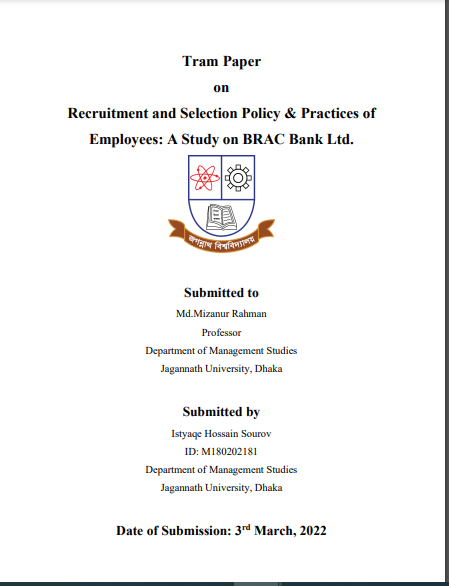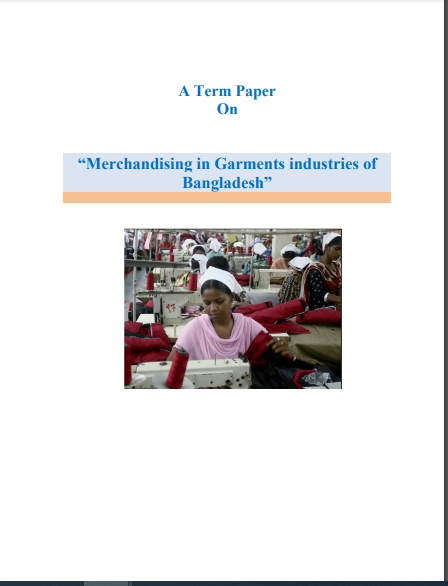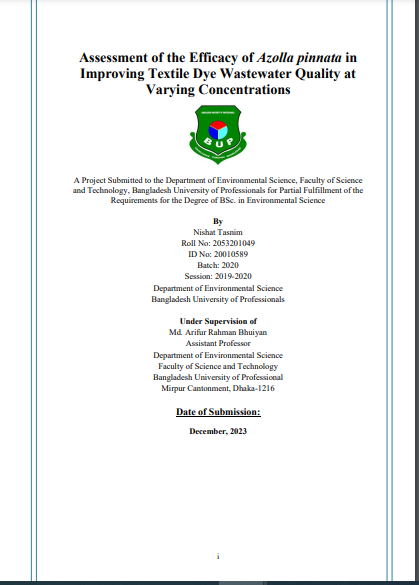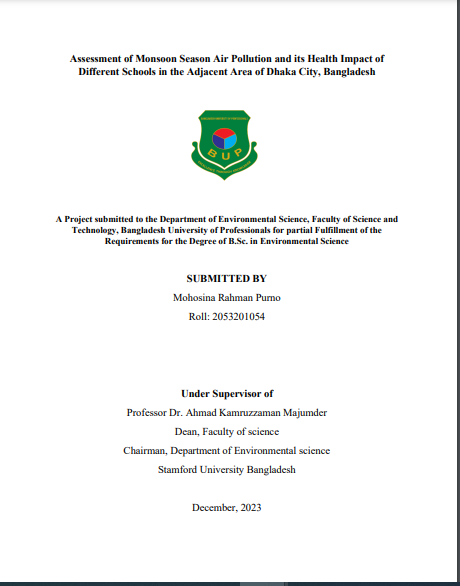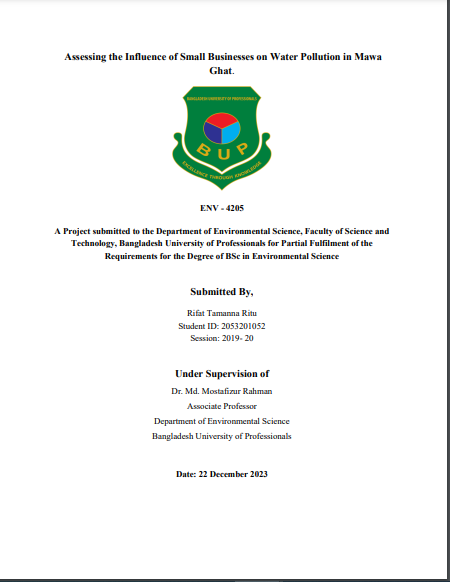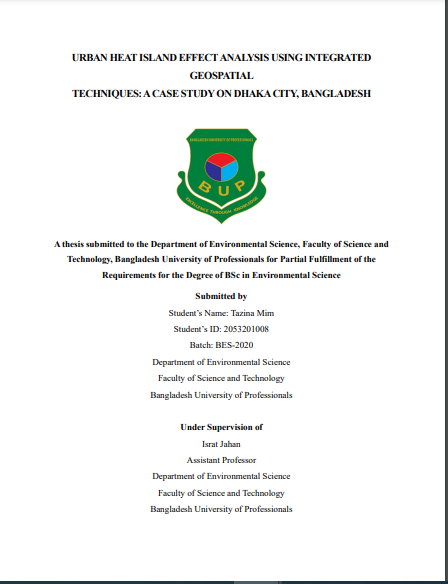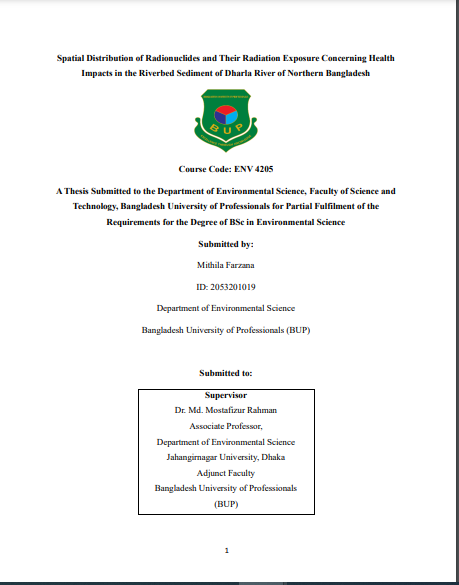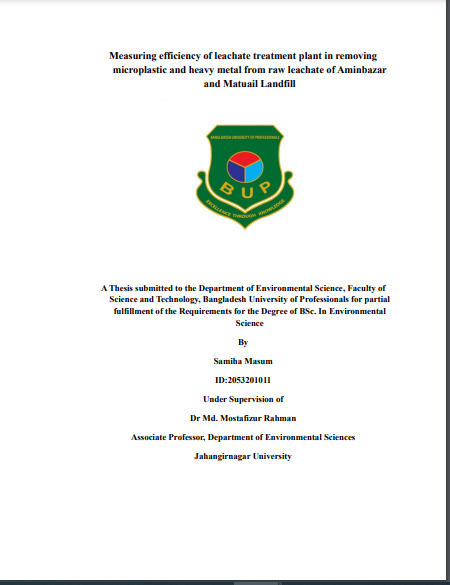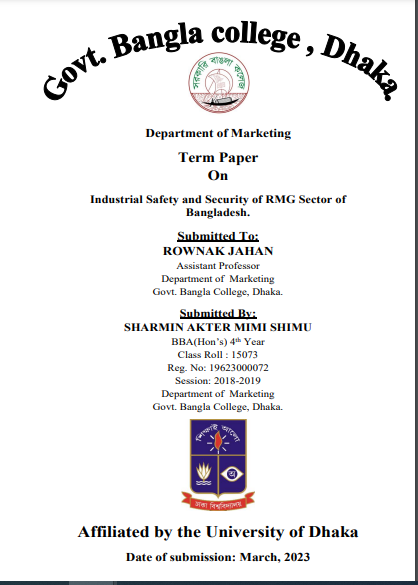
Executive Summary :
Industrial Safety and Security of RMG Sector of Bangladesh. The Garment and textile sector in Bangladesh is essentially the lifeline for both urban and rural poor in terms that it is the only major labor-intensive sector with huge employment generating potential. Half of the Bangladesh population is still dependent on agriculture, facing the worst poverty situations.
There is a fast-growing service sector and it contributes about 50 percent of GDP, but its contribution in employment is only 34.6 percent. Despite the phenomenal success of the RMG sector, poor working conditions in the factories and the lack of social compliance are other serious concerns.
The research aims to figure out the unresolved issues regarding Health and safety status of the garments workers, states the necessity of Health & Safety policies in work place and attempts to provide a useful guideline for building proper Health & Safety plan for present garments manufactures & exporters.
| Report Title : | Industrial Safety and Security of RMG Sector of Bangladesh |
| University Name : | Govt. Bangla College, Dhaka |
| Submitted To : | Rownak Jahan |
| Submitted By : | Sharmin Akater Shimu |
| Total Page : | 34 |
Around 20 million people are directly and indirectly depending on this sector for their immediate livelihoods. It has bought benefit and blessings for millions of people in the country. Along with bringing recognition and positive appraisal for the nation, textile and RMG industry also hold the record of experiencing some worst industrial accidents in the country.
Bangladesh as an emerging tiger has largest democracy with the continuous economic growth 6%- 7.5%. Resilient high growth economy leads to new businesses, every day in every possible sector. Taking Purchasing Power Parity (PPP) into account Bangladesh is the 44th largest economy in the world. JP Morgan has included Bangladesh among their shortlists of “transitional states likely to succeed”.
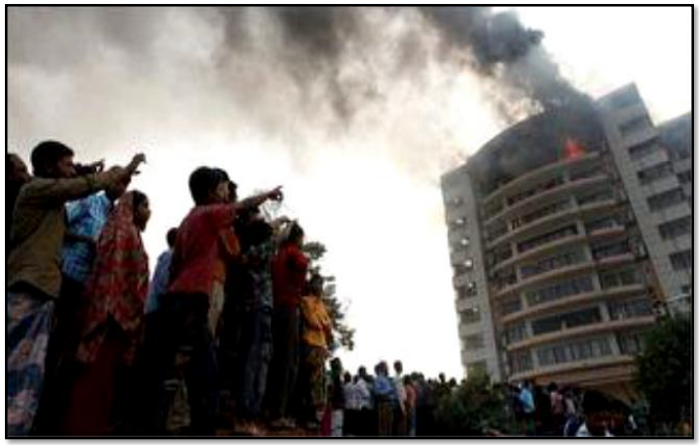
Bangladesh is also listed in the N-11 by the Goldman Sachs Group, Inc. RMG, the mainstay of Bangladesh economy, accounts for 78% of country’s export economy. Bangladesh became the 2nd largest apparel exporting country in the world. During the fiscal year 2010-2011 RMG export totaled USD17.91 billion, a 43% increase over previous year. Recently WTO has ranked Bangladesh as the 4th largest exporter of readymade garments‟ in the world.
Textiles and Readymade Garments‟ sector contributes 13% of GDP and employs more than 3.6 million people, including 80% of them is women. The industry has created a platform for 2.8 million women to engage in new productive role in the society and empowering them, RMG is playing a significant role to alleviate poverty through skills development and employment generation.
Since May 2006, the Bangladesh RMG Industry has been beset with very serious labor unrest, resulting in large-scale damage to garments factories by the workers and at times threatening the very existence of this industry. The major disputes concern wages, working hours, appointment procedures, forced labor, child labor, health and safety, security, gender discrimination and sexual harassment, and trade unionism.
However, labor standards in the RMG sector in Bangladesh are generally considered to be poor, they are lower than in comparable. As a result, the RMG industries in Bangladesh have been facing considerable pressure from international buyers for compliance with their Codes of Conduct.
In the conditions as abovementioned, this paper is proposed to appraise the design of garments factories from a safety point of view. The paper would focus on literatures, interviews and case study on previous incidence to find out the health and safety issues of the garment’s workers in a RMG factory. The study would propose suggestion to alleviate the chances of casualty in RMG factories.
Outline of the Report
Chapter 1: Introduction, Objectives, Justification, Limitations of the study, Methodology, Research Question.
Chapter 2: Literature Review.
Chapter 3: Research Findings, Labor rights violations in the factories, Ignored Safety issues, Grueling hours and unpaid leave, A failure of enforcement.
Chapter 4: Recommendations, Conclusion, Bibliography.
Annexure 1: Interview Questionnaire.
Objectives Of the Report:
The primary aim of this report is to provide an idea about the existing health and safety condition in the Garments industry of Bangladesh. By delving into this critical aspect, the report seeks to shed light on the challenges faced by workers, the gaps in existing practices, and the potential for improvement in workplace safety standards.
The Specific Objectives of the report is to apprehend the following:
• Analyze the present Health & Safety Situation:
The objectives of the report are thoroughly examining the present state of health & safety in the workplaces of Bangladesh garments sectors. This report is include identifying prevalent assessing risks faced by workers & evaluating the effectiveness of existing measures in ensuring a safe working place.
• Ensure the Necessity of Policies and Global Best Practices:
Another key objective is to emphasize the importance of adopting robust health & safety policies. This report will be focus comparisons with successful implementations in developed countries, highlighting their strategies, policies & technologies that have proven effective in crating safe workplaces.
• Guidelines for Building Comprehensive Health and Safety Plans:
Present guidelines for building proper Health & Safety plan for present garments manufactures & exporters. This report seeks to provide detailed recommendations & guidelines for establishing proper health and safety framework.
Conclusion:
A safe and secure working environment is the fundamental right of the workers. From the international human rights instruments to our domestic laws worker’s rights are protected but, in our country, due to lack of the enforcement mechanisms and unwillingness of some people these problems remain unsolved. The study revealed some of the aspects of existing situation of occupational safety and health in Bangladesh.
The constitution of Bangladesh recognizes productivity as basic need for development and covers right to work and reasonable wages, Medicare and, disease and disablement. Labor unions are allowed in almost all occupations except in export processing zones. The trade unions mainly focus on issues of workers right, although OSH issues are also considered but obtaining secondary importance. The OSH activity of the employers is not sufficient.
However, Inspection, reporting and compliance of existing national and international laws and standards must be enforced properly to minimize further incidents due to lack of occupational safety provisions.
